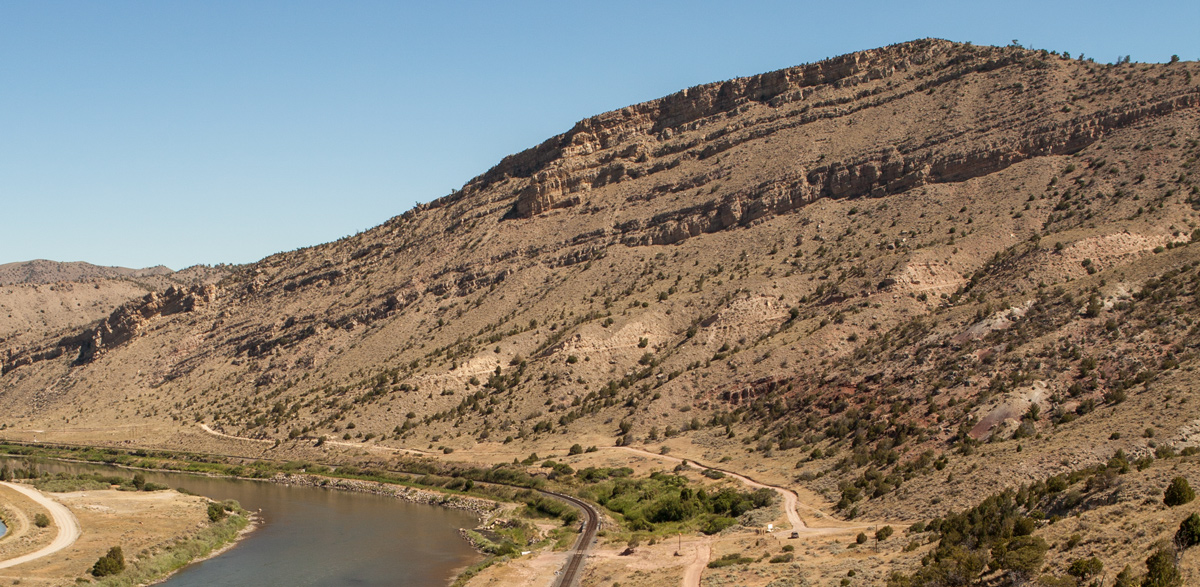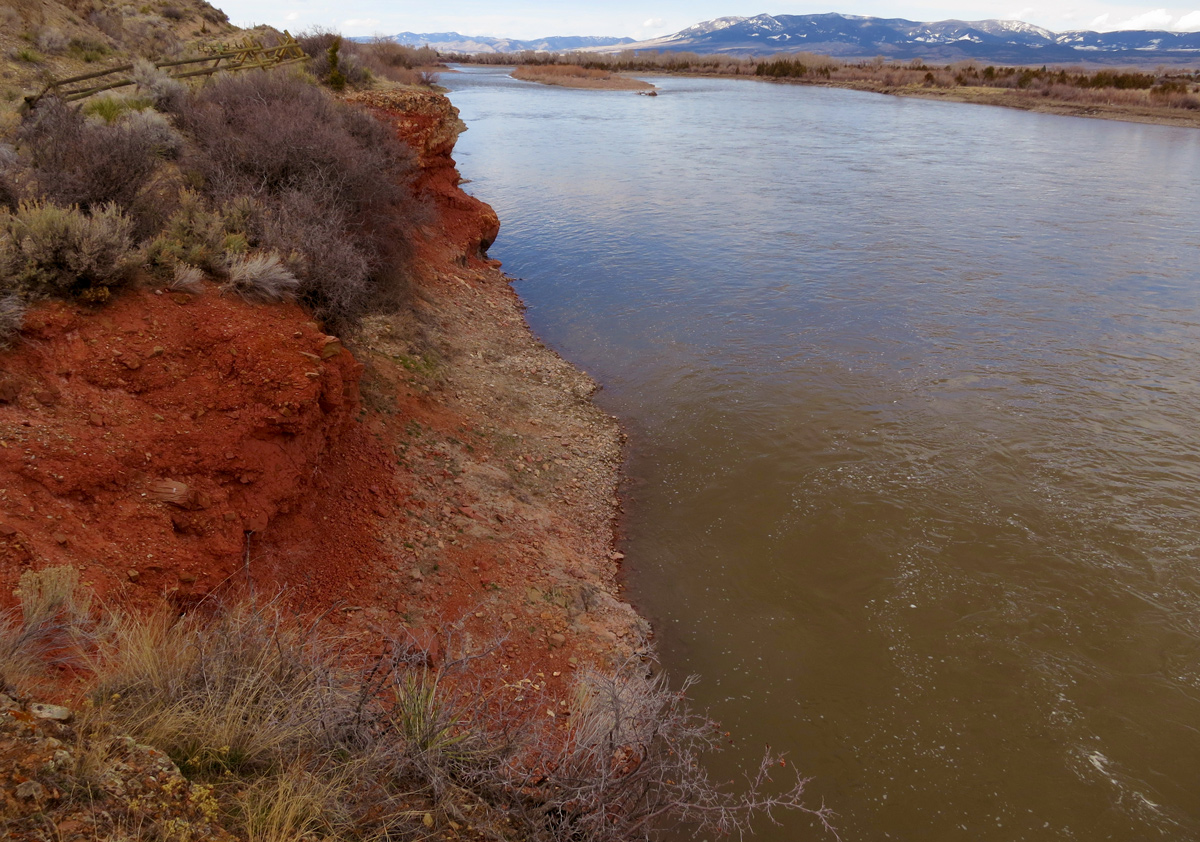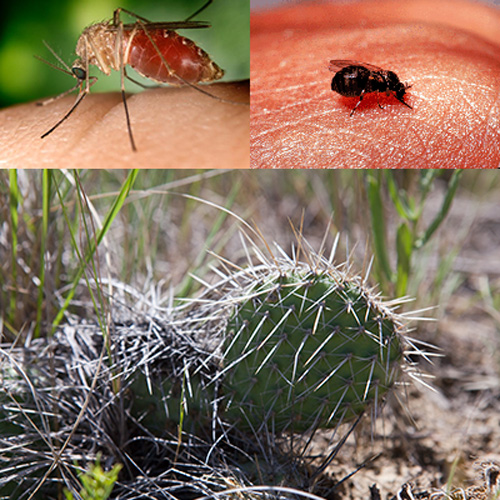Scouting ahead, Clark sees hills “fallen half down & turned Side up-wards”. His small group camps near present Clarkston, Montana.
Lewis describes the great fatigues and discomforts of the men as they tow and pole the canoes against the Missouri River. They pass the Crimson Bluffs, Sacagawea assures Lewis that the river will remain navigable, and Lewis complains of a “trio of pests“. They camp at Yorks Islands.
Half Fallen Down Hills
Hills Turned Side Upwards
Lombard Thrust Fault, Missouri River, view north
Near Toston Dam, 23 July 2013. © by Kristopher K. Townsend. Permission to use granted under the Creative Commons Attribution-Share Alike 4.0 International license.
the mountains on either Side appear like the hills had fallen half down & turned Side up-wards the bottoms narrow and no timber a fiew bushes only.
—William Clark
Crimson Bluffs
Set out at sunrise; the current very strong; passed a remarkable bluff of a crimson coloured earth on Stard. intermixed with Stratas of black and brick red slate.
—Meriwether Lewis
Sacagawea Assures Lewis
I fear every day that we shall meet with some considerable falls or obstruction in the river notwithstanding the information of the Indian woman [Sacagawea] to the contrary who assures us that the river continues much as we see it.
—Meriwether Lewis
A Trio of Pests
Black Fly by F. Christian Thompson, U.S. Department of Agriculture.
Culex mosquito by Jim Gathany U.S. Center for Disease Control
Plains prickly pear: © 21 July 2011 by Kristopher K. Townsend.
A Trio of Pests
our trio of pests still invade and obstruct us on all occasions, these are the Musquetoes eye knats and prickley pears, equal to any three curses that ever poor Egypt laiboured under, except the Mahometant yoke.
—Meriwether Lewis
Men Much Fatigued
the men complain of being much fortiegued, their labour is excessively great. I occasionly encourage them by assisting in the labour of navigating the canoes, and have learned to push a tolerable good pole in their fraize.
—Meriwether Lewis
Brown and Black Snakes
we observed a great number of snakes about the water of a brown uniform colour, some black, and others speckled on the abdomen and striped with black and brownish yellow on the back and sides.[1]See “The Lewis and Clark Expedition and the Townsend Black Snake” We Proceeded On, https://lewisandclark.org/wpo/pdf/vol43no1.pdf#page=31.
—Meriwether Lewis
Weather Diary
State of the thermometer at rise
Weather at rise
Wind at rise
State of the Thermometer at 4 P.M. Weather at 4 P.M. Wind at 4 P.M. State of the river 60 [above 0] fair S W 90 [above 0] fair S W. fallen ½ in. —Meriwether Lewis[2]To assist the reader, the editor of this web page has omitted the date column, merged the “State of the river” columns, and spelled out some abbreviations.
Experience the Lewis and Clark Trail
The Lewis and Clark Trail Experience—our sister site at lewisandclark.travel—connects the world to people and places on the Lewis and Clark Trail.
Plan a trip related to July 24, 1805:

Crimson Bluffs is a High Potential Historic Site along the Lewis and Clark National Historic Trail managed by the U.S. National Park Service. The Crimson Bluffs are managed by the Bureau of Land Management and are open to the public.
Yorks Islands is a High Potential Historic Site along the Lewis and Clark National Historic Trail managed by the U.S. National Park Service. Yorks Islands is a Fishing Access Site managed by Montana Fish, Wildlife, & Parks.
Notes
| ↑1 | See “The Lewis and Clark Expedition and the Townsend Black Snake” We Proceeded On, https://lewisandclark.org/wpo/pdf/vol43no1.pdf#page=31. |
|---|---|
| ↑2 | To assist the reader, the editor of this web page has omitted the date column, merged the “State of the river” columns, and spelled out some abbreviations. |





